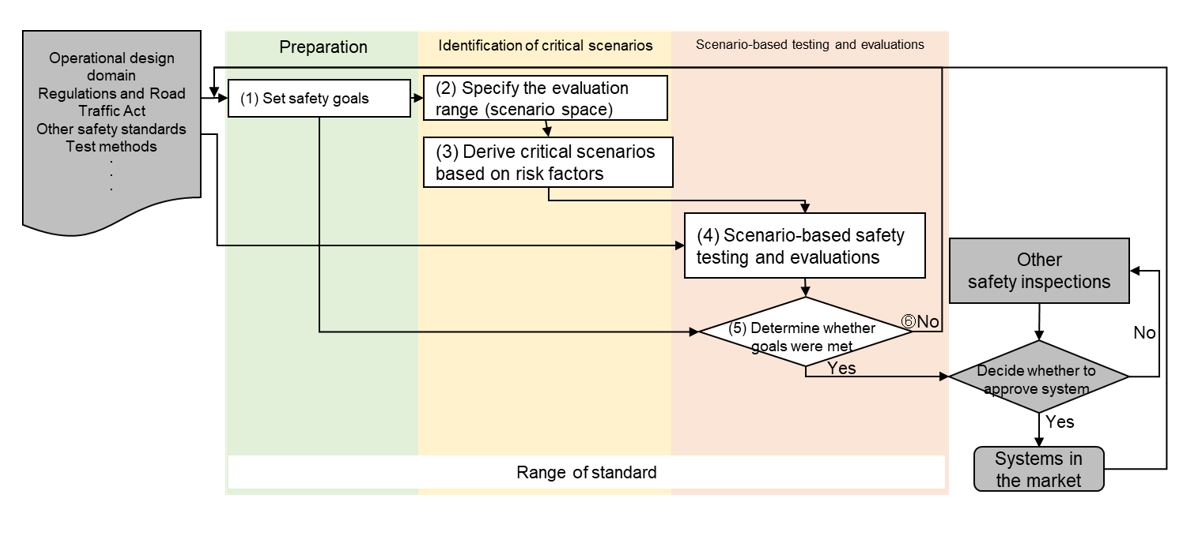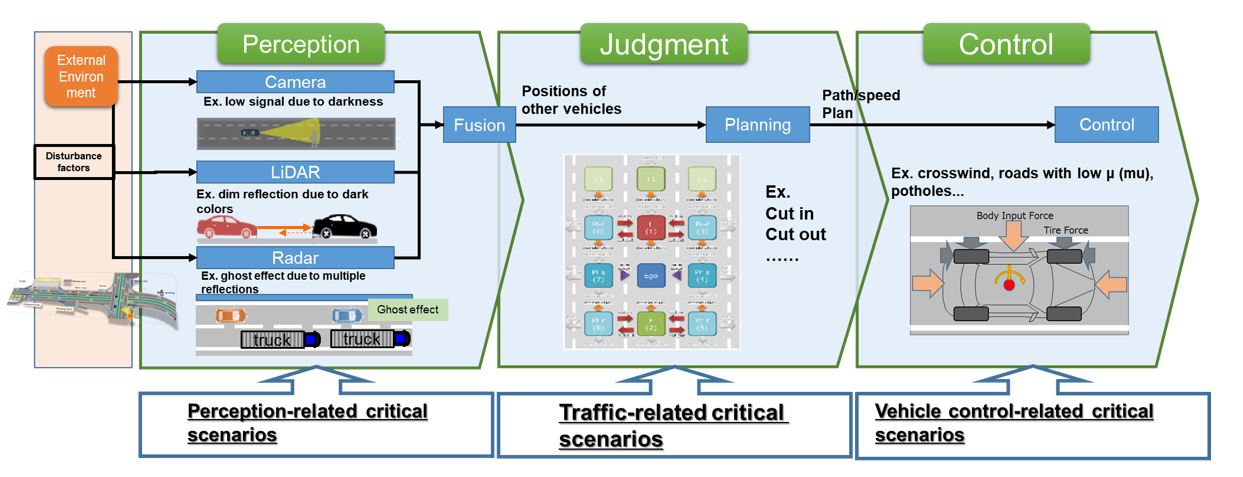- Home
- News Releases
- Back Issues
- November FY2022
- New International Standard Issued for the Scenario-Based Safety Evaluation Framework for Automated Driving Systems Formulated by Japan
New International Standard Issued for the Scenario-Based Safety Evaluation Framework for Automated Driving Systems Formulated by Japan
- Aiming to achieve a safe society with free mobility (ISO 34502) -
November 16, 2022
Creating automated vehicles is expected to reduce environmental burdens and traffic accidents, alleviate traffic congestion, and solve various other social issues, as well as increase the international competitiveness of the automobile industry.
An international standard formulated by Japan for procedures and scenarios used to evaluate the safety of automated driving systems has been issued. This is expected to improve the safety and development efficiency of automated driving systems.
1. Background
Automated vehicles are expected to reduce environmental burdens and traffic accidents, alleviate traffic congestion, and solve various other social issues, as well as increase the international competitiveness of the automobile industry. Implementing internationally unified indicators when evaluating the safety performance of automated driving systems will contribute to the achievement of a safer, more efficient and free mobility society.
Until now, the development of assisted driving systems has involved tests that recreate scenarios (arrangements of various mutual relationships of, for example, driving environments and behaviors by other vehicles such as cutting in or out) through simulations by using data on accidents examined under projects in different countries, data on real world environments measured using dashboard cameras and other tools, and tests that involve actually driving for long periods of time in various environments. In order to apply these test results and data to safety evaluations for automated driving systems, there are issues that must be addressed, such as determining the test ranges of speed and distance of other vehicles in traffic, and whether there are too much or too little data for the evaluation of scenarios.
Therefore, in order to solve these issues, Japan has proposed ISO 34502, which includes safety evaluation procedures based on specific scenarios. The standard was issued on November 2, 2022*1.
2. Outline of the standard
This standard consists of safety evaluation procedures for automated driving systems, methods of deriving critical scenarios (events that require immediate action to ensure safety if a vehicle is recognized as dangerous to the driver's), and other items. (Figure 1)
(1) Set safety targets (e.g., surpassing a competent driver)
(2) Set test ranges for scenarios (e.g., speed of other vehicles in traffic)
(3) Specify critical scenarios based on factors that can lead to dangerous events (e.g., relative speed or distance between the driver's vehicle and others) and from the scenario test ranges in (2)
(4) Conduct safety tests and evaluations
(5) Determine whether the safety targets set in (1) are being met
(6) If (5) is not met, request a review of the automated driving system and return to (1) (iterative loop)

Figure 1: Overall flow of the safety evaluation as specified in ISO 34502
A unique feature of Japan's proposal is that it proposes a more feasible scenario-based approach for deriving critical scenarios. This method derives scenarios without omission by classifying each factor of an automated driving system under either "recognize," "judge," or "operate," and systematically organizing the potentially dangerous events for each one. (Figure 2)
The most efficient verification work can be hindered if the types of scenarios become almost unlimited. However, this approach makes it easy to examine enough scenarios to guarantee safety with the right amount of information needed.

Figure 2: Scenario systematization
In addition, five projects were started in September 2018 for evaluating safety in ISO/TC22/SC33 (testing of vehicle dynamics, chassis components, and driving automation systems) /WG9 (test scenarios of ADS). Among them, standardization efforts were focused on the project for building a scenario-based safety evaluation framework. This project utilized the results from the SAKURA Project*2 which METI conducted in order to build a safety evaluation base for automated driving systems. Thus, Japan took the initiative in the examination work leading to the issuance of ISO 34502.
3. Expected effects
The issuance of this standard will improve safety and efficiency in the development of automated driving systems as a common base when evaluating and inspecting safety in the planning, design, and evaluation phases of the development process by utilizing ISO 34502. It is also expected to increase social acceptance by clarifying the safety conditions required for automated driving systems.
ISO 34502:2022 Road vehicles — Test scenarios for automated driving systems — Scenario based safety evaluation framework
2. SAKURA Project: Safety Assurance KUdos for Reliable Autonomous Vehicles
Related Links
- International Organization for Standardization: ISO 345002

- Automotive Standardization 2021, Society of Automotive Engineers of Japan, Inc .

Division in Charge
About international standards:
International Standardization Division, Industrial Science and Technology Policy and Environment BureauAbout the SAKURA Project:
ITS and Automated Driving Promotion Office, Automobile Division, Manufacturing Industries Bureau